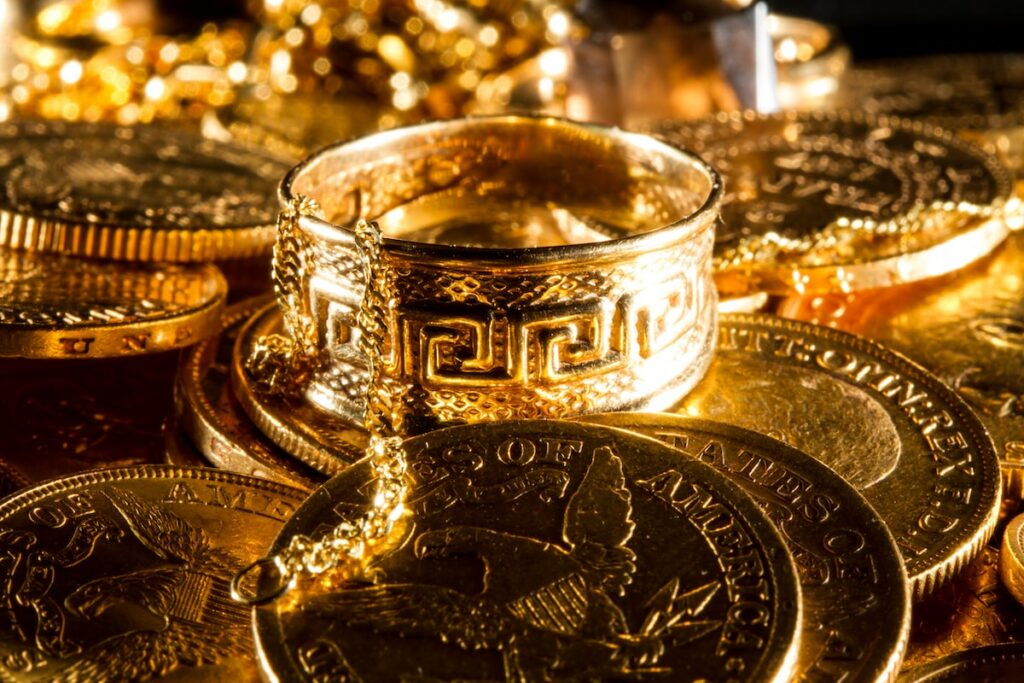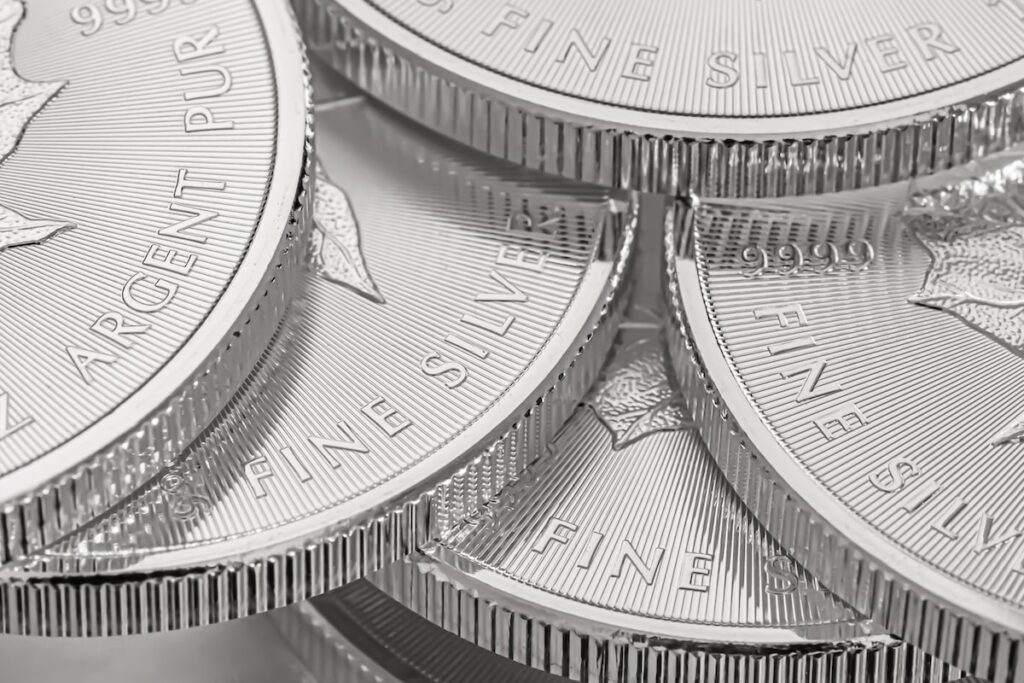In the annals of human history, certain objects have held an undeniable allure, capturing the imagination and shaping the course of civilizations.
Among these treasures, silver stands out as a mesmerizing embodiment of elegance and value.
Its shimmering brilliance has fascinated cultures throughout the ages, leaving behind a trail of intrigue and fascination.
Silver was valued in history due to its rarity, malleability, and conductivity. It served as a medium of exchange, a symbol of wealth and status, and had practical applications in trade, craftsmanship, and medicine.
Delving into the depths of the past, we embark on a journey to unravel the enigma behind silver’s extraordinary worth. What made this precious metal so highly coveted in historic times?
What intrinsic qualities and cultural forces converged to elevate silver to a position of unparalleled value?
Join us as we explore the fascinating tapestry of history, seeking to understand silver’s enduring allure and timeless significance.
Silver as a Symbol of Wealth and Status
Silver, with its radiant gleam and inherent value, has long been revered as a symbol of wealth and status across diverse cultures and epochs.
In many societies throughout history, possessing silver was a testament to prosperity, affluence, and social standing.
The allure of silver’s brilliance and rarity made it an ideal medium for displaying opulence and distinguishing oneself among peers.
The association between silver and wealth can be traced back to ancient civilizations. Silver was significant in their economies and social structures from the Egyptians and Greeks to the Romans and Chinese dynasties.
The possession of silver coins, jewelry, and ornate silverware became markers of wealth and influence, providing a tangible representation of an individual’s affluence.
Moreover, silver’s enduring appeal as a status symbol extended beyond its monetary value.
The craftsmanship and artistry displayed in silver objects were often considered a reflection of sophistication and refinement.
Elaborate silverware, decorative accessories, and intricate jewelry crafted from silver became emblems of a person’s elevated societal position.
Silver has remained a potent symbol of wealth and status throughout history, transcending cultural boundaries.
Its timeless elegance and its, rarity and inherent value continue to captivate the human psyche, cementing its place as a cherished metal associated with affluence and prestige.
Silver’s Historical Significance in Medicine and Healing
Silver’s historical significance in medicine and healing spans centuries, with its antimicrobial properties and therapeutic benefits making it a valuable resource in various medical applications.
Recognized for its ability to inhibit the growth of bacteria, silver has been employed in different forms to treat wounds, prevent infections, and promote healing.
Dating back to ancient times, civilizations such as the Greeks, Romans, and Egyptians utilized silver for its medicinal properties.
Silver compounds were applied topically to wounds and injuries to prevent infection and promote healing.
Silver’s antimicrobial action helped ward off pathogens and reduce the risk of secondary infections, making it a vital tool in treating injuries and surgical procedures.
Silver’s antimicrobial efficacy was further harnessed in developing silver-based dressings and ointments.
These products, containing silver nanoparticles or ions, have been used in modern wound care to combat bacteria and promote wound healing.
Silver dressings are known for managing infections, controlling odor, and providing a moist environment conducive to healing.
Beyond its role in wound care, silver has also found applications in other areas of medicine.
Silver-coated medical devices, such as catheters and implants, have been utilized to prevent bacterial colonization and the formation of biofilms.
Silver-based solutions and ointments have been employed in treating burns, ulcers, and various skin conditions due to their antimicrobial and anti-inflammatory properties.
The historical significance of silver in medicine and healing stems from its ability to combat bacteria, prevent infections, and accelerate the healing process.
From ancient civilizations to modern healthcare, silver’s antimicrobial efficacy and therapeutic benefits have positioned it as a valuable tool in promoting health and well-being.
The ongoing exploration of silver’s potential in medical research continues to unveil new possibilities for its application in medicine.
Silver’s Role as a Medium of Exchange
Silver was a pivotal medium of exchange throughout various historical periods, serving as a trusted currency in diverse economic systems.
Recognized for its intrinsic value and widespread acceptance, silver became a preferred means of conducting trade and facilitating commercial transactions.
In ancient times, silver emerged as a reliable form of currency due to its scarcity, durability, and divisibility.
It was easily recognizable, making it convenient for merchants and traders to assess its worth.
Silver coins’ standardized weight and purity allowed for seamless transactions, promoting commerce and facilitating economic growth.
Silver coins became a ubiquitous currency from the Silk Road to medieval marketplaces and colonial trade routes.
They circulated across regions, bridging diverse economies and enabling the exchange of goods and services.
The universality of silver as a medium of exchange fostered international trade networks, promoting economic prosperity and cultural exchange.
Silver’s role as a medium of exchange was not limited to coinage alone.
Silver bars, ingots, and even cut pieces served as alternative forms of currency, particularly in times when officially minted coins were scarce or unavailable.
Silver’s versatility and inherent value made it a trusted means of conducting business, allowing individuals and communities to confidently engage in economic transactions.
Throughout history, silver’s widespread acceptance as a medium of exchange played a crucial role in facilitating economic interactions.
Its durability, divisibility, and universal recognition allowed for seamless trade, contributing to developing vibrant commercial networks and developing economies worldwide.
Silver’s Role in Empires and Civilizations
Silver played a significant role in the rise and fall of empires and civilizations throughout history, leaving an indelible mark on their economic, political, and cultural landscapes.
Silver’s allure and practical utility fueled exploration, trade, and conquest, shaping the destiny of nations and the course of history.
One of the primary ways silver influenced empires and civilizations was through its role as a form of currency.
Silver coins became the lifeblood of economies, facilitating trade and commerce across vast territories. Empires such as the Roman Empire, the Spanish Empire, and the Ottoman
Empire relied on silver as a medium of exchange, establishing robust trade networks and amassing wealth through control of silver mines and trade routes.
The abundance of silver in regions such as the Americas, particularly during the Spanish colonization, led to the rise of powerful empires.
The influx of silver from mines such as Potosí in present-day Bolivia and Zacatecas in Mexico fueled the Spanish economy. It financed military campaigns, enabling the empire to expand its global influence.
Moreover, silver played a role in the accumulation of wealth and power by empires and civilizations.
Silver treasures, whether coins, bullion, or intricate silverware, became luxury and status symbols.
Possessing vast reserves of silver enhanced an empire’s economic and military capabilities, enabling it to exert dominance and influence over other nations.
The trade-in of silver also had profound cultural impacts.
As silver circulated through trade routes, it fostered cultural exchange, spurring the spread of ideas, technologies, and artistic influences.
The integration of silver into local craftsmanship and artistic expressions created magnificent silver jewelry, decorative objects, and religious artifacts, reflecting the blending of cultural traditions.
However, relying on silver as a source of wealth and power could also lead to the downfall of empires.
Economic fluctuations, depletion of silver mines, and shifts in global trade patterns could undermine the stability and sustainability of empires built on silver wealth, eventually contributing to their decline.
Silver played a pivotal role in the rise and fall of empires and civilizations.
As a currency, a symbol of wealth, and a catalyst for trade, silver shaped the destiny of nations, fueled exploration and influenced cultural exchange.
Its abundance or scarcity, control or loss, had far-reaching consequences for the empires that wielded its power, leaving a lasting legacy on the historical stage.
Silver’s Photographic Legacy
Silver’s photographic legacy traces back to the early days of photography when it played a pivotal role in capturing images and preserving memories.
Silver’s light-sensitive properties made it a crucial component in traditional photographic processes, revolutionizing the way we document the world around us.
In the era of film photography, silver compounds, such as silver halides, were used in light-sensitive emulsions coated onto film.
When exposed to light, these compounds underwent chemical changes, creating latent images that were later developed into visible photographs.
This process relied on the ability of silver to react with light and capture the intricate details of a scene.
Silver’s properties greatly influenced the development of black-and-white photography.
Photographers utilized silver-based processes to create stunning monochrome images, leveraging the metal’s sensitivity to light and its ability to render shades of gray with remarkable precision.
Silver’s role in black and white photography resulted in captivating and timeless images that continue to evoke emotions and tell stories to this day.
Even with the advent of digital photography, silver’s legacy remains significant.
The transition from film to digital imaging may have shifted the medium.
Still, the underlying principles of light capture and image formation owe much to the foundational role of silver in the early photographic processes.
The knowledge gained from silver-based photography continues to shape the advancements in digital image sensors, ensuring high-quality image reproduction and fidelity.
Silver’s photographic legacy extends beyond the technical aspects.
It has left an indelible mark on the art and culture of photography.
The stunning silver prints, the meticulous darkroom techniques, and the craftsmanship involved in the development process have become synonymous with the medium.
Silver’s contributions to photography have shaped our visual history, allowing us to freeze moments in time, preserve memories, and express our creativity through the power of images.
In conclusion, silver’s light-sensitive properties and its pivotal role in developing traditional photographic processes have left an enduring legacy in photography.
Its ability to capture light and create stunning images has shaped the art form and influenced the evolution of imaging technologies.
Silver’s contribution to the photographic world will forever be remembered as a testament to its unique properties and significant impact on visual storytelling.
Learn more about how silver is used today on our blog.




